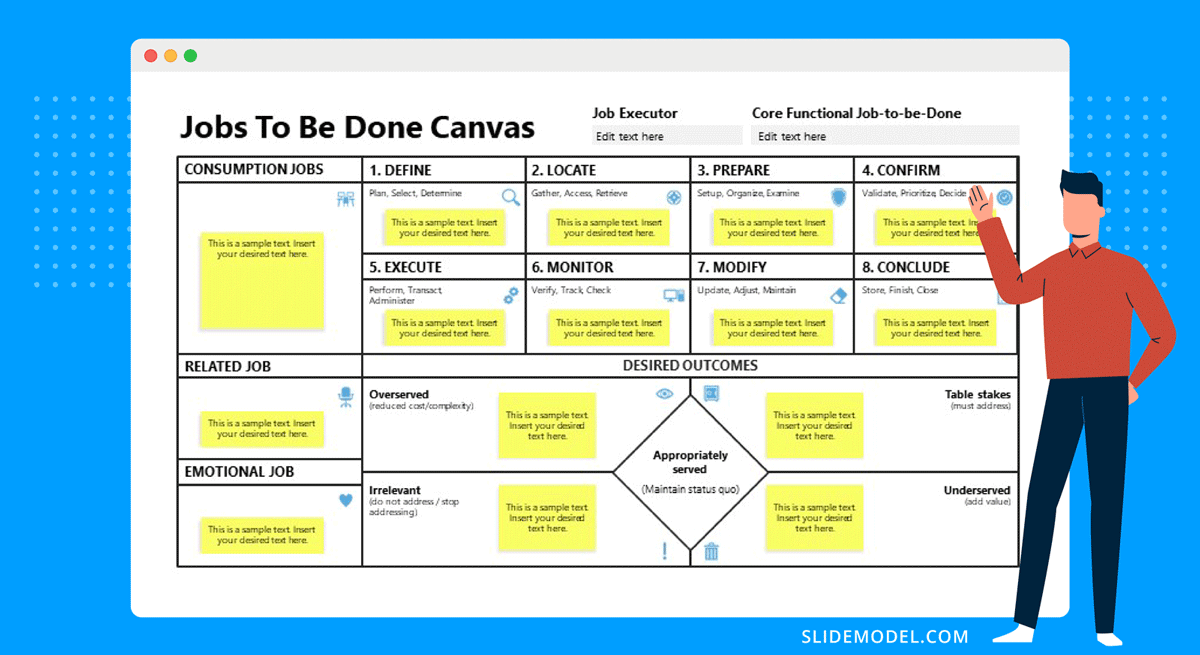Content marketing has evolved beyond simply creating and distributing content. To truly resonate with audiences and drive meaningful business outcomes, marketers must understand the underlying "jobs" their customers are trying to get done. This white paper explores the application of Jobs to be Done (JTBD) theory to content strategy, demonstrating how this framework can unlock deeper customer insights and lead to more effective and impactful content.
Jobs to be Done: A Framework for Content Strategy that Drives Results
Introduction
Content marketing has evolved beyond simply creating and distributing content. To truly resonate with audiences and drive meaningful business outcomes, marketers must understand the underlying "jobs" their customers are trying to get done. This white paper explores the application of Jobs to be Done (JTBD) theory to content strategy, demonstrating how this framework can unlock deeper customer insights and lead to more effective and impactful content.
Understanding Jobs to be Done (JTBD)
- Core Principle: JTBD theory posits that customers "hire" products or services to get a specific "job" done. This job is not merely about fulfilling a need, but also about achieving a desired outcome or resolving a specific situation.
- Beyond Features and Benefits: JTBD focuses on understanding the underlying motivations, emotions, and circumstances that drive customer behavior. It shifts the focus from product features to the customer's desired outcome.
- Key Components of a Job:
- The Job to be Done: What is the customer trying to achieve? What problem are they trying to solve?
- Circumstances: What are the specific situations or contexts in which the customer needs to get this job done?
- Motivations: What are the emotional and social factors that drive the customer's desire to get this job done?
Applying JTBD to Content Strategy
- Define Customer Jobs:
- Deeply understand your target audience: Conduct thorough customer research, including interviews, surveys, and observation.
- Identify key customer journeys: Map out the different stages of the customer journey and the jobs customers are trying to get done at each stage.
- Examples:
- "Learn how to cook a healthy meal."
- "Find a reliable contractor for home renovations."
- "Plan a memorable vacation."
- Create Content that Addresses Customer Jobs:
- Develop content that directly addresses the customer's desired outcomes:
- How-to guides and tutorials: Provide step-by-step instructions and practical advice.
- Case studies and testimonials: Showcase how your product or service helps others achieve their goals.
- Expert advice and insights: Offer valuable insights and expert opinions that address customer concerns.
- Interactive content: Engage customers with quizzes, calculators, and other interactive experiences.
- Emphasize emotional connections: Address the emotional motivations and aspirations of your target audience.
- Develop content that directly addresses the customer's desired outcomes:
- Optimize Content for the Customer Journey:
- Tailor content to specific stages of the customer journey:
- Awareness: Create content that introduces your brand and educates potential customers about your industry.
- Consideration: Provide in-depth information and comparisons to help customers evaluate your solutions.
- Decision: Offer compelling reasons to choose your product or service.
- Retention: Build long-term relationships with customers through valuable content and ongoing support.
- Tailor content to specific stages of the customer journey:
- Measure and Iterate:
- Track key metrics: Monitor website traffic, engagement, conversions, and other relevant metrics to assess the effectiveness of your content.
- Gather customer feedback: Use surveys, feedback forms, and social media monitoring to understand how your content is resonating with your audience.
- Continuously refine your content strategy: Based on data and customer feedback, make adjustments to your content to better address customer needs and achieve your business objectives.
Benefits of Using JTBD in Content Strategy
- Increased Relevance: Create content that directly addresses customer needs and resonates deeply with your audience.
- Improved Customer Engagement: Develop content that is more engaging, informative, and valuable to your target audience.
- Enhanced Brand Loyalty: Build stronger relationships with customers by demonstrating a deep understanding of their needs and aspirations.
- Increased Conversions: Drive more leads, sales, and customer loyalty by creating content that helps customers achieve their desired outcomes.
References:
- "Jobs to Be Done: Theory to Practice" by Clayton M. Christensen, Stephen W. Kim, and David S. Duncan
- The Jobs To Be Done Group: https://hbr.org/ (Search for articles on Jobs to be Done)
Disclaimer: This white paper provides a general overview of applying Jobs to be Done theory to content strategy. The specific implementation will vary depending on your industry, target audience, and business objectives.
By embracing the Jobs to be Done framework, marketers can create more effective and impactful content that resonates with their audience, drives meaningful engagement, and ultimately achieves business goals. Contact Keencomputer.com fr details.
